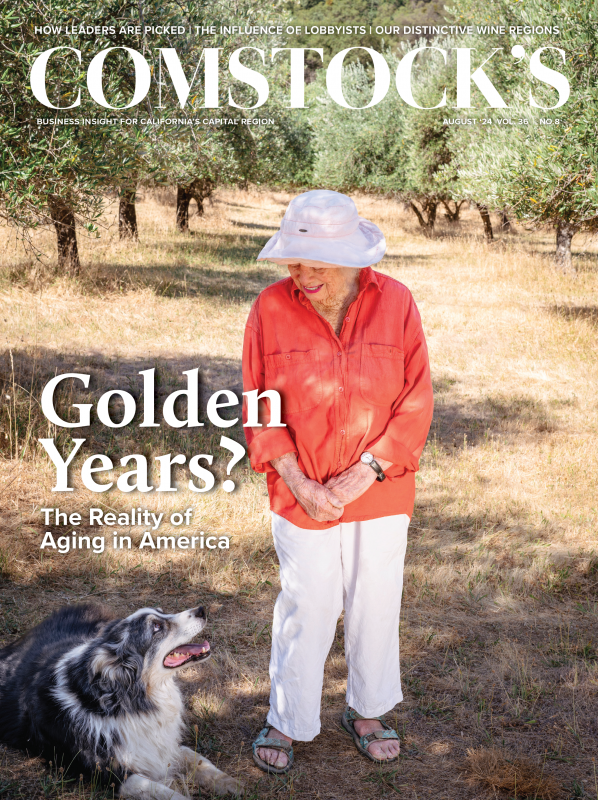Chef Jeana Marie Pecha’s menu changes so fast, sometimes daily, at her Omakase Por Favor outpost in Lincoln that you might have to return often to see what she’ll be conjuring up next for her omakase, a six-course tasting menu inspired by the Japanese tradition of trusting the chef. (From Japanese, omakase roughly translates to “I’ll leave it up to you.”) That snow crab tostada you had on a Monday might be unavailable on Friday because of seasonal and limited ingredients she sources from fishermen and Lincoln farmers. “We’re adapting,” Pecha says. “We’re moving.”
Over the years, omakase has evolved from a Japanese culinary tradition mostly associated with high-end sushi restaurants to a dining concept that accommodates a wide range of palates. Opened in November 2023, Omakase Por Favor marries traditional Mexican coastal flavors with a Japanese sushi bar experience. Having lived on the Mexican coast, Pecha found herself unable to find the mariscos, aguachiles and oysters she had enjoyed there once she was back in the States. “I feel like they are very underrepresented,” she says of these coastal dishes. “And then, if you do find it, it’s just very cheap. It’s not like great quality, which to me, I just don’t think it’s a great representation of what Mexican food can be.”
Chef Jeana Marie Pecha of Omakase Por Favor serves oysters
charred with miso butter at her Mexican-Japanese restaurant in
Lincoln.

Aside from her television credits, which include Netflix’s “Pressure Cooker” and The Food Network’s “Chopped” and “Guy’s Grocery Game” (the latter of which she won), some of Pecha’s inspiration came from her “heroes in fine dining chefs in Mexico City,” she says — like Chef Enrique Olvera’s two Michelin star restaurant Pujol, where he serves up taco omakase. Pecha, who grew up in Roseville, wanted to bring something elevated and unique to Placer County and showcase how Mexican food is more than tacos, burritos and nachos.
“Everybody’s so different, and so if you just have one experience for everybody, it’s not going to resonate with everyone,” Pecha says.
“That’s why I think omakase is huge, because the idea is you’re modifying your experience for chef and person interaction.” When she was in Tokyo and couldn’t read the menu, saying “‘omakase’ … took all the worry out of it, because now, you’re just along for the ride,” she adds.
She thinks local businesses should adopt omakase. While it may not make financial sense to some, in the long run, Pecha says, chefs and owners are investing in getting to know the customers better and what they want. And the “real essence of omakase,” she adds, is the ability to do what you want. “We are working together here.”
In October, she’s opening a Midtown location called Omakase Oyster Bar, where she aims to bring the true omakase experience to Sacramento. “Omakase is the perfect dining experience for the curious diner,” she says. “Our lives have been to a point where everything’s so crazy, and sometimes even making decisions on a menu is hard.”
Fusion adaptations
Hiro Ip, general manager and one of the business partners at Azayaka Japanese Fusion, offers his own take on what omakase means to the Sacramento area. “You have to adjust your dishes to meet the demand of the taste buds of where you’re operating,” he says. One example: Many American chain restaurants that opened abroad weren’t successful until they introduced items that locals were familiar with. KFC in Vietnam, for example, serves seaweed soup and egg tarts. “You can’t really do authentic Japanese food here,” he says. “It’s too traditional.” He says people might try it, but they probably wouldn’t return.
An omakase meal at Chef Frank Japanese Cuisine in Sacramento
might include chawanmushi topped with uni, scallop and salmon roe
(center); tomato and asparagus dressed agedashi-style in a soy
sauce broth (left); and a wide array of sushi.

Azayaka, which opened its first location in Sacramento in 2022 and will open a second this fall, serves their interpretation of Japanese fusion cuisine infused with French and European influences, such as grilled albacore with spicy aioli sauce or scallops on the half shell with butter, corn, truffled mushroom and daikon sprouts. One recent menu addition was yuzu escargot: snails cooked in yuzu (a Japanese citrus)-scented sake, seaweed, butter, garlic and Japanese seasoning. Their toro ikura toast is another fusion involving pan-frying the bread with butter, and then topping it off with some fatty tuna and salmon roe.
The restaurant also serves sushi, including edo-mae sushi, a style dating back to Japan’s Edo period that uses traditional akazu red vinegar in place of rice vinegar, but its main cuisine is otsumami-style Japanese dishes (think tapas) that pair with sake. It’s a way to enjoy the moment, Ip says.
Azayaka is also one of the first few restaurants that offer omakase in the area. Since it’s “very boring” to do just nigiri and sashimi omakase, Ip says, the chefs get creative. They change their menu every three months, led by their executive chef Wenhui Pang (known as Chef Kong), who used to work for Kru as an omakase chef and at a few Michelin-starred restaurants in San Francisco.
Even though omakase is growing, Ip says many people still don’t know about it, partly because of prices. “Nobody is going to pay $100 or more every day,” he says. “This is why it’s super difficult, especially in Sacramento. I think it’s pretty difficult for omakase-only restaurants. And this is also the reason why when we do omakase, we don’t expect people just come for omakase.”
An evolving trend
At Chef Frank Zhu’s Chef Frank Japanese Cuisine, tako sakura-ni, or cherry blossom octopus, is slow-cooked the traditional Japanese way: simmered for 40 minutes with mirin and special sauces. This and saikyo yaki (black cod with miso), a classic and iconic dish, are parts of his omakase menu for this season.
Zhu opened his eponymous restaurant in Sacramento in May 2023. Ten years before that, he refined his sushi-making skills at Sacramento’s long-standing Sushi Café. In 2016, he opened a sushi restaurant in China and learned various sushi styles before returning to Sacramento in 2018.
Zhu serves fusion cuisine while keeping to Japanese tradition and techniques. “The goal is to respect the essence of Japanese cuisine while introducing new elements that surprise and delight our guests,” Zhu says. “For example, we experiment with presentation, incorporate local and seasonal ingredients that create unique flavor profiles.”
One omakase course, called agedashi tomato, adapted from the traditional Japanese dish agedashi tofu, or fried tofu with tempura sauce. With agedashi tomato, Zhu uses in-season ingredients like tomatoes and asparagus instead of tofu. “Seasonal ingredients are usually the healthiest and freshest,” he says.
Zhu continues to find ways to enhance the guests’ experience while balancing the logistic side and making a profit. “I can’t fully control the supply,” he says. Fish is flown from Japan, and sometimes, it’s out of stock. Spinach, which he has to buy every day to make spinach with sesame dressing, is sometimes unavailable at the supermarket. Despite these constraints, Zhu chooses to offer omakase because it’s a way to reimagine dishes and share his creativity with his customers.
“While some business owners believe that omakase might be too
expensive for people in Sacramento, it’s important to consider
the growing appreciation for unique and high-quality dining
experiences in the area,” Zhu says. “Sacramento’s diverse and
evolving food scene indicates that there is a market for premium
offerings like omakase.”
Sacramento is “slowly getting there,” says Tim Wong, one of the
first chefs to focus on omakase sushi in the Capital Region.
After being diagnosed with cancer in 2019, he quit his full-time
job as a sushi chef in San Francisco and later started a pop-up
omakase dinner series in Sacramento. He planned to open an
omakase-only sushi restaurant, Tenko, downtown.
A week before Mother’s Day this year, Wong learned the cancer had come back. A week after that, he decided to walk away entirely from his work as a chef and restaurateur to focus on his health. When he comes back early next year, Wong plans to “moonlight” at friends’ restaurants and start another pop-up series; but this time, as a private in-home omakase for a maximum of six guests, with 17 to 19 courses.
“There is nothing mysterious about omakase,” Zhu says. “I think it is the chef who arranges the best food for the guests to taste, seasonal ingredients and flexible cooking methods.”
Recommended For You
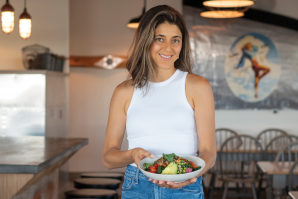
Savor the Layover
These local airport restaurants are worth the trip
If you’re in the Capital Region, there are plenty of interesting options — and not only at Sacramento International Airport, which is set to have a major refresh of its dining program by 2025. Whether you’re flying a jumbo jet or a crop duster, you’ll find something to nosh on when you land in and around Sacramento.

Luscious Libations
Distilleries use local, natural flavors to enhance their creations
Whether in Sacramento or the upper climbs of the Gold Country, craft distillers are ready to give the drinking public a taste of all of the possibilities within libation.
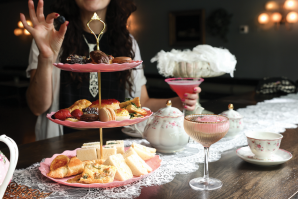
Is Tea the New Happy Hour?
These Capital Region tea rooms bring a California twist to an English tradition
Afternoon tea evokes something people have always sought — “a feeling of rarely experienced elegance and class,” Mueller says.
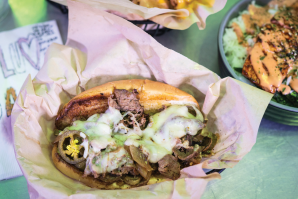
Jet’s Sets Off
This Midtown hotspot started out as a college student’s pandemic project
When Jet Bonanno started his shoestring home-based food operation, he never dreamed it would morph into a thriving brick-and-mortar restaurant. But that’s exactly what happened when Bonanno opened Jet’s American Grill & Bar at the ripe old age of 22.
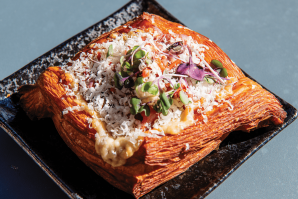
Pop-Up Popularity
Female chefs and bakers find success outside the traditional restaurant model
These nomadic eateries, which surged in popularity around the Great Recession, came in vogue again during the COVID-19 pandemic, often as the only option for cooks in lockdown.
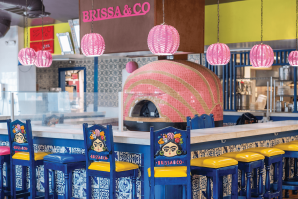
La Dulce Vida
Meet the Capital Region panaderos bringing creative flavors and techniques to Mexican bakery classics
Pan dulce (in English, sweet bread) is being reimagined by intrepid bakers across the Capital Region. Comstock’s recently spoke with three local panaderos who are taking pan dulce to new heights while simultaneously paying tribute to the cultural traditions and food memories that shaped them.




